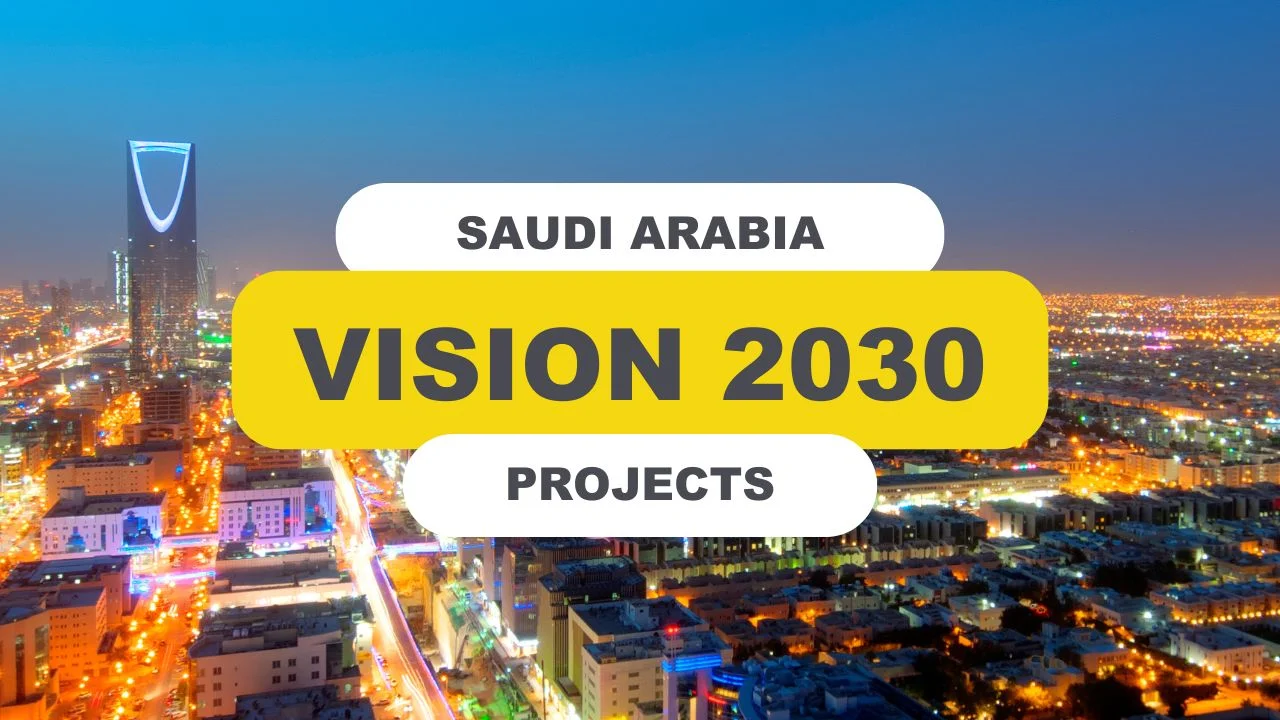
Driving Growth and Localisation in Saudi Arabia: Vision 2030
13 Nov, 20257:14Key Insights: Saudi Arabia’s localisation agenda is propelling economic diversification...

Key Insights:
- Saudi Arabia’s localisation agenda is propelling economic diversification, job creation, and industrial independence under Vision 2030.
- A strong framework, covering workforce development, regulatory reform, and sectoral initiatives, is strengthening domestic capabilities and private sector participation.
- With 70% of Saudi CEOs planning to increase headcount, technical and engineering roles are rising in demand, intensifying competition for skilled local workers.
- Businesses must prepare for compliance, cultural alignment, and sustainable workforce planning to succeed in this changing market – areas where NES provides strategic support.
How is Saudi Arabia Driving Growth Through Localisation?
Under the Vision 2030 framework, the Kingdom has shifted from an oil-reliant model to one powered by innovation, private sector participation, and industrial localisation. According to the Business Focus Saudi Arabia Report 2025, non-oil sectors now account for 53.2% of the country's GDP, with construction, hospitality, transport, and retail sectors leading the growth.
By fostering domestic supply chains and reducing reliance on imports, the Kingdom is ensuring that industries such as energy, pharmaceuticals, AI, and advanced manufacturing become dominant players of sustainable growth.
The Local Content and Government Procurement Authority has been central to this transformation, introducing frameworks that prioritise Saudi-made goods and services. For instance, the Vision 2030 Annual Progress Report 2024 states local content in the oil and gas sector reached 65.5% in 2024, achieving nearly all of the year’s targets. Similarly, localisation in pharmaceuticals (40%) and medical devices (15%) has strengthened domestic resilience and technology transfer.
Such measures are expanding the Saudi job market, creating over 2.4 million private sector jobs in 2024 alone, and positioning the Kingdom as a hub for industrial innovation.
Why is Localisation Key to Vision 2030?
Localisation isn’t a short-term policy; it’s a structural pillar of Vision 2030’s long-term success. The initiative’s phased approach has transitioned from capacity building to accelerated national delivery. As the Kingdom enters its third phase in 2026, localisation will underpin its ability to sustain impact well beyond 2030.
Economic indicators validate this trajectory. The IMF’s April 2024 World Economic Outlook raised the Kingdom’s growth forecast to 6%, making it the second-fastest-growing economy globally after India. Likewise, the PwC Saudi Arabia CEO Survey 2025 found that 77% of Saudi CEOs anticipate domestic growth over the next year, which is significantly higher than the global average.
These numbers demonstrate more than optimism but reflect confidence in Saudi Arabia’s capacity to build industries, cultivate human capital, and attract foreign investment, all while maintaining macroeconomic stability.
How is the Kingdom Developing its Workforce to Meet Localisation Goals?
Workforce localisation, or Saudisation, is one of the most visible aspects of Vision 2030. Technical engineering professions have recently seen an increase in Saudisation requirements, with a 30% quota, reshaping hiring dynamics across the energy, construction, and infrastructure sectors.
PwC also reports that 70% of Saudi CEOs plan to increase headcount in 2025, far above the 42% global average. This surge in hiring is driven by the expansion of local industries, the entry of international firms, and the increasing representation of women in the workforce.
However, challenges remain. 40% of business leaders cite skill shortages as a concern, particularly in technical, digital, and engineering fields. To bridge this gap, the government is heavily investing in upskilling initiatives. The National Strategy for Data and Artificial Intelligence is training women, youth, and entrepreneurs in AI, machine learning, and STEM disciplines, helping build a generation of Saudi experts.
For companies seeking to hire local professionals, partnerships with experienced technical agencies in Saudi Arabia, such as NES, can ensure compliance with Saudisation requirements while delivering the right skills for critical infrastructure and energy projects.
How Are Localisation and Digitalisation Intertwined?
Localisation in Saudi Arabia isn’t confined to manufacturing or traditional industries. The country’s technology and telecom market is now the largest and fastest-growing in the region, valued at $132 billion in 2024.
The Vision 2030 Annual Progress Report 2024 notes that $14.6 billion has been invested in AI and data centres, generating 381,000 high-skilled jobs. The government’s Project Transcendence, backed by a $100 billion investment, aims to position the Kingdom as a global leader in AI.
Saudi Arabia has already achieved its Vision 2030 target of becoming a top 15 country in AI, ranking 14th globally as of 2024. The launch of HUMAIN, a national AI initiative funded by the Public Investment Fund (PIF), is further driving homegrown innovation and Saudi-owned intellectual property.
This merger of localisation and digitalisation is reshaping the employment market. While automation and AI may reduce some office roles, they’re also expected to become the most significant drivers of job growth, particularly in fields such as engineering, data science, and renewable energy.
What Role Does Sustainability Play in Saudi Arabia’s Growth?
Sustainability has become a core driver of localisation. Saudi Arabia’s Vision 2030 aims to achieve 50% renewable energy generation by 2030 and net-zero emissions by 2060.
According to PwC, 72% of Saudi CEOs have made climate-friendly investments in the past year, outpacing many of their regional peers. These investments aren’t only environmental commitments, but catalysts for new industries, technologies, and employment opportunities.
A variety of projects, including Qiddiya and Amaala, are collectively expected to create 90,000 jobs and contribute $37 billion to GDP by 2030 (Business Focus). These developments exemplify how sustainable growth and localisation are mutually reinforcing, building economic resilience while enhancing global competitiveness.
How Can International Businesses Thrive in a Localised Economy?
For international companies entering or expanding in Saudi Arabia, localisation is both an opportunity and a responsibility. Success depends on key factors, such as:
- Regulatory compliance – adhering to Saudisation quotas, local content requirements, and procurement rules.
- Cultural and organisational adaptation – integrating Saudi professionals, respecting workplace norms, and aligning corporate values with national priorities.
- Strategic workforce planning – building long-term skills pipelines and leveraging technical partners with local market expertise.
Explore Saudi Opportunities with NES
NES supports clients through this journey by delivering end-to-end technical solutions, compliance management, and workforce development services across Saudi Arabia’s energy, engineering, and technology sectors. With on-the-ground teams and expert regional experience, we connect global companies with the best local technical and engineering professionals, helping organisations achieve sustainable growth and alignment with Vision 2030’s workforce objectives.
Contact our expert team in Saudi Arabia to discover how we can support your business growth.










